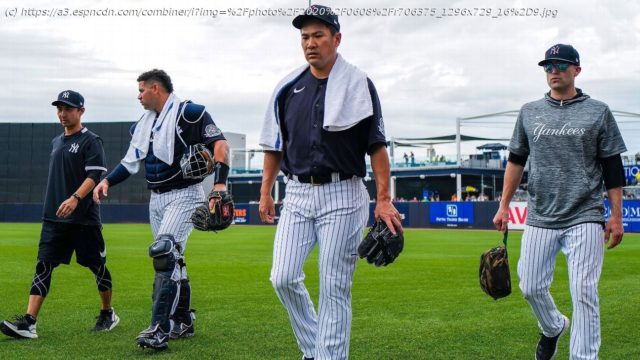Play ball or not even close? We break down the latest plan for baseball’s return.
Major League Baseball made an updated proposal for the 2020 MLB season to its players’ union on Monday, moving to have a 76-game season with players getting 75% of their prorated salaries that includes eliminating draft-pick compensation for free agents for a year, a $200 million postseason pool for the players and a postseason that ends no later than Oct.31.
How much likelier does today’s plan make it that there will be an agreement to play baseball this summer? Is a 50-game season better than a 76-game campaign? What are the biggest sticking points of this latest proposal? We asked ESPN.com MLB reporters Jesse Rogers, Bradford Doolittle and David Schoenfield to break it all down.
How likely are the players to accept the 76-game proposal with prorated salary proposed Monday?
Rogers: Not likely, especially with the playoff caveat that would lower the amount if no postseason is played. The no draft-pick compensation is a nice carrot, but that’s all it is. Bottom line: The players aren’t making that much more than from the 50-game possibility that exists.
Schoenfield: This doesn’t really bring the sides any closer together. Here, Jeff Passan spells it out:
THREAD: Here’s how to understand MLB’s current offer to the players as compared to its last offer and the possibility of a 48-game season.
– Jeff Passan (@JeffPassan) June 8, 2020
Since this offer is less in guaranteed money, it seems unlikely to appease the players, but it’s getting close to crunch time here, and a potential $1.43 billion in salary is still $1.43 billion.
Doolittle: They won’t accept it in this form, but they have to be honest (within the union, not with us) about why they won’t accept it. This does appear to me to be a very small step toward the players, so hopefully it is viewed as just another proposal, one that merits a response, and not another talking point for more empty media statements and social media blathering.
Bottom line, how much more likely does Monday’s proposal make a 2020 MLB season?
Doolittle: I wouldn’t want to put a number on it, but in general, at least it’s a sign that the owners are still negotiating rather than becoming entrenched in the idea of implementing a mini-season. But the miasmic aspect of the talks could make this little sprout of an olive branch pretty much meaningless.
Schoenfield: I think Brad makes a good point. And especially as we start getting more details on NBA and NHL seasons starting back up and golf tournaments starting up and so on, that puts more pressure on the owners and the union to shake hands on something. Baseball doesn’t want to be the one sport where it’s bickering over money instead of resuming competition. There is still a chance to have baseball in July, and that would be a big plus for the sport.
What are the biggest potential sticking points from Monday’s proposal?
Rogers: For one, the playoff caveat that says players would only get 50% of their prorated salary if the postseason is canceled. It’s going to be hard enough to persuade them to take 75% if the postseason is played. From the start, players haven’t wavered from the idea they believe they agreed to a full, pay-per-game proration of their 2020 salary.
• Kiley McDaniel’s MLB mock draft 2.0 »
• Top 150 prospects »| Team guide »
• Redrafting top picks from 2010-2019 »
• Meet MLB draft’s man of mystery »
• “Tork” about to make draft history »
• Gonzales’ stats not out of thin air »More 2020 MLB draft coverage »
Doolittle: Yeah, I agree with Jesse — the pro rata drop from 75% to 50% is severe, even if you buy into the revenue portrait that notion paints, which is that so much of the remaining revenue potential from the season is dependent upon starting a postseason. If the 75% were guaranteed, my very quick scribbling suggests that players would be getting roughly 35% of their original salaries for a 76-game slate. The 50-game proposal at full pro rata would have been around 31%.
This much is clear: If the playoffs were canceled, and the pro rata distribution dropped to 50%, then the payout to players ends up at pretty much what the 50-game proposal would have paid. So why would the players agree to the risk of playing the extra 26 games?
Under this proposal, how much of their total salary would a player make this season?
Doolittle: Based on a rate of 75% of full pro rata over 76 games, I’ve got players earning 35.






